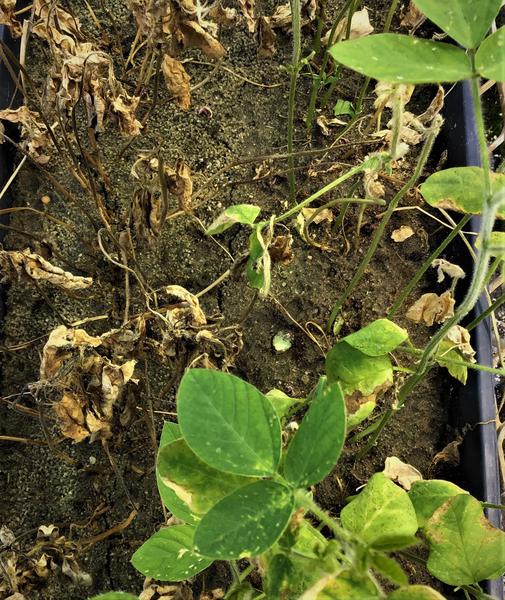Glyphosate Injury
- Type
- Physiological
- Leaf Condition
- Marginal Necrosis, Interveinal Necrosis, Stunted
- Leaf Color
- Yellow, Patchy Yellow And Brown Areas, Marginal Chlorosis, Interveinal Chlorosis
- Leaf Location
- Entire, Young
- Plant Size
- Stunted
- Field Distribution
- Random, Edges
- Prior Environmental
- Wind
- Season
- Early Vegetative, Mid To Late Vegetative
- Cropping System
- Soybean Followed By Soybean, Conventional Till, Reduced Till
Symptoms
Glyphosate (herbicide [HG] 9) inhibits the production of aromatic amino acids, precursors to essential plant enzymes and structures. Glyphosate is a non-selective herbicide that is applied postemergence and has no residual soil activity. Glyphosate is phloem-mobile in plants, resulting in injury being seen on new growth.
Injury symptomology includes chlorosis and necrosis. Glyphosate is phloem mobile which results in injury occurring a new growth. The development of glyphosate injury on soybeans will be a slow process. Early injury symptomology can be mistaken for nutrient deficiency. Injury will not be present on glyphosate-resistant soybean varieties (e.g. Roundup Ready), but will be evident on conventional and select glufosinate-resistant (e.g. Liberty Link) soybean varieties.
Management
Since glyphosate has no residual soil activity, non-glyphosate-tolerant soybeans cannot be injured via carry over. Injury will not be present on emerging soybean plants. Physical drift can be avoided by spraying when the average wind speed is less than 10 miles an hour and mid-day or –afternoon to avoid a temperature inversion.



